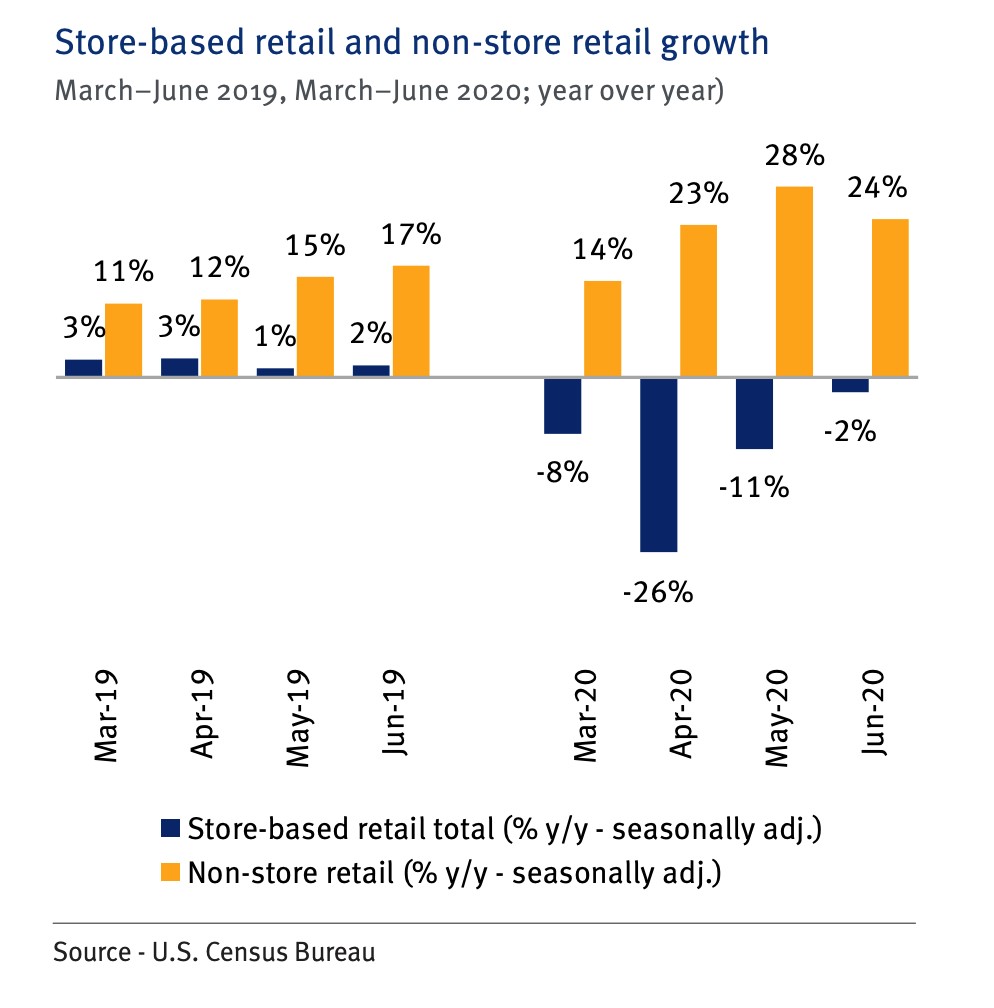Throughout this pandemic, using technology has become a necessity for the vast majority. This has led to strong gains in many technology themes, and some investors may be suffering from a severe case of investing FOMO (fear of missing out). Although it can be difficult to discern the appropriate valuation of a company’s stock, the growth of these industries is suspected to continue even post-pandemic. One area to highlight is e-commerce.
In North America, shopping is experienced as a form of entertainment, and with the reduced access to travel and live events, it is no wonder that e-commerce has risen in popularity. With that said, according to Daniel Perlin, Payments, Processes & IT Services Analyst at RBC Capital Market’s, ecommerce still only represents 15% of total US retail sales. Moreover, according to RBC CM’s 8th annual U.S. Online Shopping Survey, when respondents were asked if COVID would lead to a permanent increase in online shopping versus in-store, more than 50% responded “Yes”. In addition, over 60% of respondents acknowledged an increase in online spending due to the pandemic.
The fear of shared public spaces is becoming more prevalent and has fast-tracked the shift to online retail. As seen in the graph below by the U.S. Census Bureau, non-store retail was already coming off strong year-over-year growth numbers between March to June 2019. In 2020, this same three month time period experienced accelerated growth on a year-over-year comparison. At its’ peak in May, there was a whopping 28% year-over-year growth in online shopping, while in-store retail fell by 11%.

Although one may posit that e-commerce growth is primarily linked to the pandemic, there is reason to believe that this growth is here to stay. A series of reports titled, “New Normal, New Opportunities”, by RBC Wealth Management states that e-commerce penetration rates in the U.S. this year jumped from 13% in February to 15% in March, and then to 19% in April. With each passing day, as more individuals become increasingly accustomed to making purchases online, the greater amount of growth potential is created.
For investors, e-commerce has to be viewed beyond the handful of pure-play online retail ‘giants’ that have become household names. E-commerce is part of a corporate strategy towards digitization where communications and sales are facilitated between customers and businesses. One should review their portfolio and ask themselves: Do my non-technology stocks have a digital e-commerce offering? If not, are their competitors providing one? What changes and how much capital is required to create an attractive digital presence? What parts of the supply chain would benefit from this shift towards e-commerce and digitization? Through this lens, one can see that e-commerce indirectly touches all sectors.
As the world begins to evolve, your investments should too. Speak with your advisor to see how your portfolio and holdings are exposed to e-commerce.
